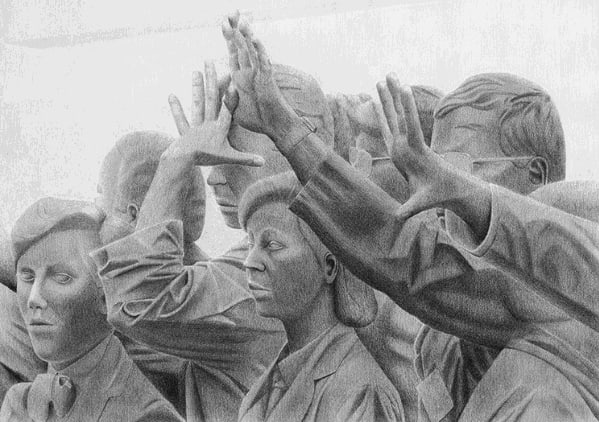Semantic Network: Gim Duk Hoon, Yang Yoo Yun, Anna Han
Semantic Network will introduce major works of three new resident artists, Yoo Yun Yang, Anna Han, and Duk Hoon Gim who deal with different media such as installation, painting and drawing and it will also offer an opportunity to discover how the artists unfold their themes and methodologies in their practice.
Producing a picture is specifying intended visual or tactile effects through a selected medium. In the case of painting, a piece of work is finally achieved by the process. In this context, every medium operates as a master cell which shares its DNA with the final outcome. Thus, how each applied pigment combines and congeals as a unit of particles ultimately decides the final colors and figures of the work whether its surface is smooth or thick enough to expose layers of matière.
Since basic components of every medium originated from natural or chemical processes, it inevitably has a sense of abstraction and non-formal elements. Similarly, a single organism is composed of numerous cells which carry out constant metabolic activities, while each shape of its cells consists of minimum units managing the function regardless of the appearance of the entity. The action of creation including painting and drawing is a phase when a medium is organized to establish a particular figure. At a particular point of the progress, a unit image appears and the image consequently has a great impact on the advent and arrangement of the other adjacent images depending on the artist’s intention and plots.
A semantic network engages in not only the entire format of a piece and the relation between its separate images but also the aspects of how every unit work which possesses individual subject and significance has been accumulated and distributed in chronological order throughout one artist’s life.
In general, a style of painting is defined by the pattern of combining techniques and subjects; the techniques play a subordinate role to support the subjects in the majority of cases. The subjects are an outcome conveying the visually materialized artists’ philosophy which originally remains in the realm of concepts. These subjects have mutual proximity in terms of notions. In other words, they often emerge within a framework including the artist’s lifestyle, environment, nationality, social influence and staple experiences, therefore, the overall understanding of their frequency and what they mutually stand for is a measure to grasp so-called ‘Auteurism’ of an artist.
Yoo Yun Yang (b.1985), who has maintained and developed a painting technique - overlapping paints on Jangji paper, dramatically depicts a moment when she projects various emotional fragments she encounters in the society onto objects of description. The thin pigments repeatedly coated on a surface make low-saturated sections which evoke a chill ambience. This visual effect works as a mechanism which metaphorically indicates given situations and sentiments of portrayed individuals. It is intriguing to catch a glimpse of gender sensitivity as a female artist in Yang’s viewpoint observing people’s behaviors in a circumstance constructed by other’s intent or external factors.
Anna Han (b.1982) transforms her perception of spaces and places into abstract figures which light and colors create. In order to interweave her psychological approaches with the physical places, Han reinterprets the given spaces based on inspiration from them or she visualizes them by conveying the gist of her own inner world and life. Employing a variety of media, materials, colors and compositions to portray an impression of the spaces, she pays attention to that the same space can be perceived differently depending on who experiences it. Accordingly, one of the prominent features of her practice is an awareness of physical experiences such as subjective acknowledgements or activities the artist herself and the audience attain in a space where two and three dimensions coexist.
In Duk Hoon Gim (b.1976)’s drawings, a piece of paper is a proactive element in charge of texture and layout of a plane instead of remaining as a passive object which only contains trajectories of a pencil. The minute bumps of pulp particles homogeneously spread over a surface are a device delicately adjusting the degree of emphasis and depth of separate images according to the pressure of touches onto them, and they also efficiently give tension and narratives to the relationship between described objects on a monotone plane. Adopting camera angles frequently seen in films and aerial photographs, Gim stubbornly seeks homogeneity by deliberately suppressing techniques to generate a unique sensation as though a sequence of a documentary video were playing on his practice.










